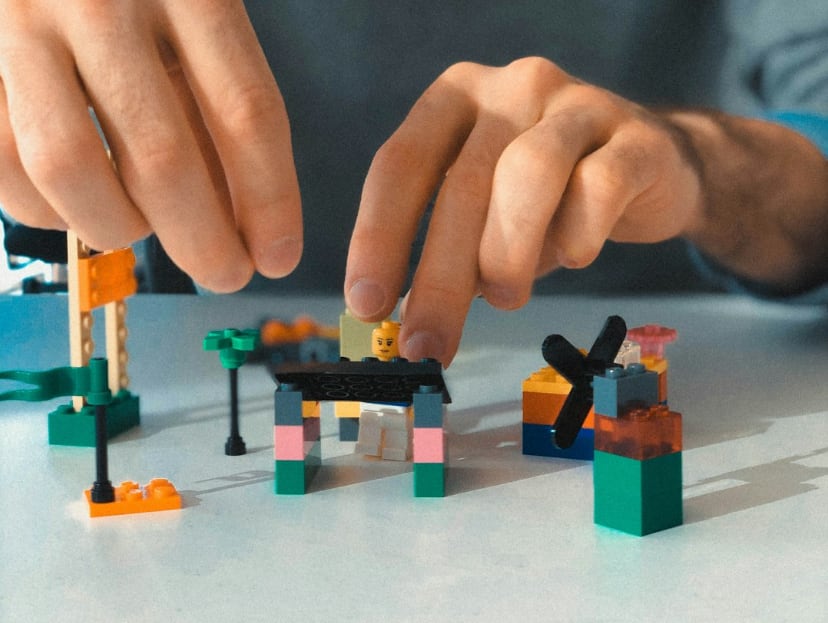It was 10am on a Thursday in September, 1993. I was standing outside a small conference room in a Berkshire hotel. I nervously shuffled through my presentation notes, waiting to be summoned. “Start confidently and don’t overrun the five minutes.”, I told myself as I heard my name called. My pulse quickened as I stepped into the room. “Philip, it’s nice to meet you. Which topic have you chosen to present on?”. “This morning,” I replied, “I’m going to address the question: Why model?”
It was the start of an intimidating two-day interview process for a job at Cable & Wireless, a telecoms company I was keen to join. That question has followed me ever since.
The signal is the truth. The noise is what distracts us from the truth. - Nate Silver
When we face a complex problem, instinct urges us to dive straight in. Fix the issue, try something, get moving. But without a clear model, a structured way to make sense of what’s happening, we risk mistaking noise for signal. To model is to map. It’s the craft of simplifying reality (a mental model or a image) to spot patterns, explore options, and test before acting.
Over my 40-year career, there have been few days when I haven’t been building or refining models. These related to product pricing, factory production, data network traffic, IT project planning and corporate strategy. Each one brought structure to complexity, turning confusion into clarity.
The ability to simplify means to eliminate the unnecessary so that the necessary may speak. - Hans Hofmann
The world is messy. Markets shift, people surprise us and systems interlock in ways that stay invisible, until they fail. The 2008 financial crisis was a vivid reminder of that. A good model cuts through this chaos, reducing it to its essential moving parts. It doesn’t try to capture everything; it reveals what matters most. Last week, I was on the London Underground. The Tube map is famously inaccurate (geographically distorted) yet invaluable for finding our way around the city. That’s the power of a good model: its purpose isn’t to mirror reality, but to make reality navigable.
Predicting better than pure guess-work, even if not accurately, delivers real value. A hazy view of what’s to come out-performs complete darkness by a landslide. - Eric Siegel
A good model is a rehearsal space for reality.
At ICI, my linear-programming model helped plan production across factories in the UK and Netherlands. At Cable & Wireless, my Excel-based model mapped how products and markets interlocked. Now, a commercial model I built at Vodafone cuts bid-response times from weeks to days.
Prediction becomes possible only when we’ve simplified the system enough to see cause and effect. Without a model, we’re guessing.
The greatest gift you can give your team: clarity, communication and pulling people together around a shared mission. - Anne Sweeny
Models aren’t just private tools, they’re collective ones. In business, a good strategy model helps a team align around shared assumptions and goals. In science, models give researchers a common framework to build on, even when they disagree about the details. A model makes thought visible. It invites critique, refinement and collective progress.
When I build models, I aim to make that visibility explicit: I document the problem the model addresses, the logical flow from inputs through calculations to outputs, and the key assumptions and limitations. The clearer the model, the easier it is for others to think with it.
Our common sense understanding of situations is continually and inadvertently shaped by our actions or practice. - Martin Reynolds
Every decision rests on a model of the world, whether we see it or not. The danger isn’t in using models, but in relying on bad or hidden ones. Making our models explicit lets us challenge assumptions and weigh alternatives. Which business model best fits our startup? Which climate model calls for the most urgent action? To model is to choose consciously rather than drift unconsciously.
The models I’ve built haven’t just mapped my world; they’ve moved me through it. They’ve guided me where to live, what to buy, how to manage debt, publish online and which startup ideas to pursue. A good model doesn’t just describe reality; it reshapes it.
Prediction is very difficult, especially if it’s about the future. - Niels Bohr
Of course, every model is wrong. The map is not the territory. The danger lies in confusing a model for reality itself. Over-reliance on models leads to blind spots, rigidity and, in some cases, disaster. But here lies the paradox: though all models are wrong, some are useful. The art is in knowing when a model is guiding us and when it is misleading us.
Five Tips to Build Better Financial Models talk by Minty Analysts
What Nassim Taleb Taught Me post by Phil Martin
Choosing Our Business Model post by Phil Martin
I must have done a reasonable job in explaining “Why model?” as that led to my 30 year career in telecoms. Lest we forget, George Box reminds us that, “Every model is wrong. Some are useful.”
Have fun.
Phil…
.png)





